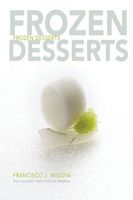Advertisement
Preparation info
- Yield
10 Portions
- Difficulty
Complex
Appears in
Published 2008
Ingredients
Components
1 kg 2 lb 3.27 oz
Method
Assembly
- For the blood orange parfait squares: Line a half sheet pan with a nonstick rubber mat. Place a
25 cm 10 in 38


